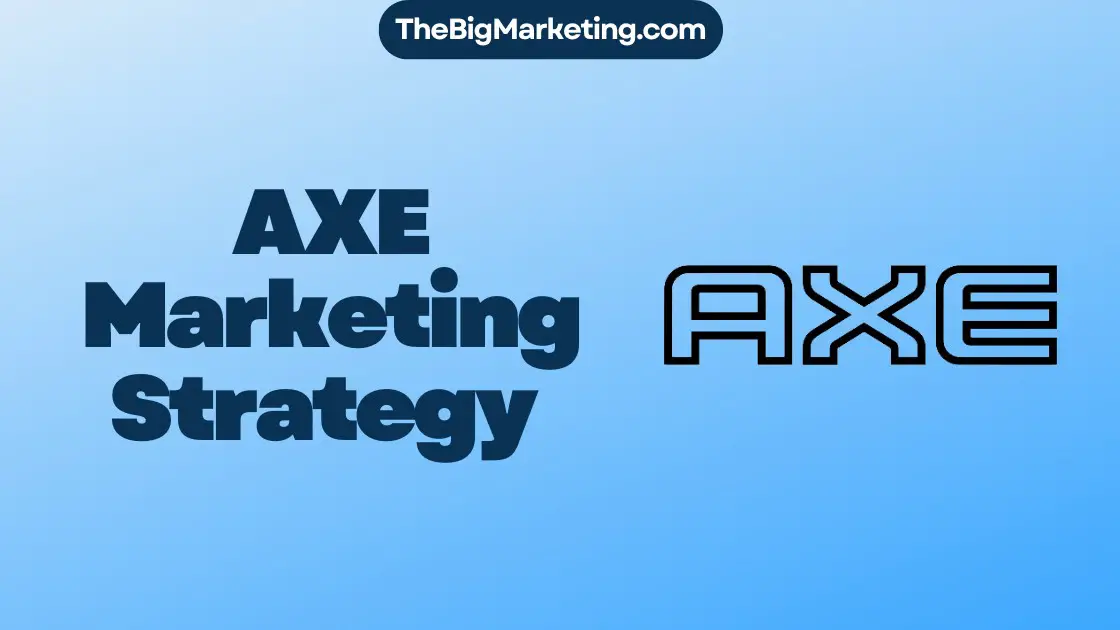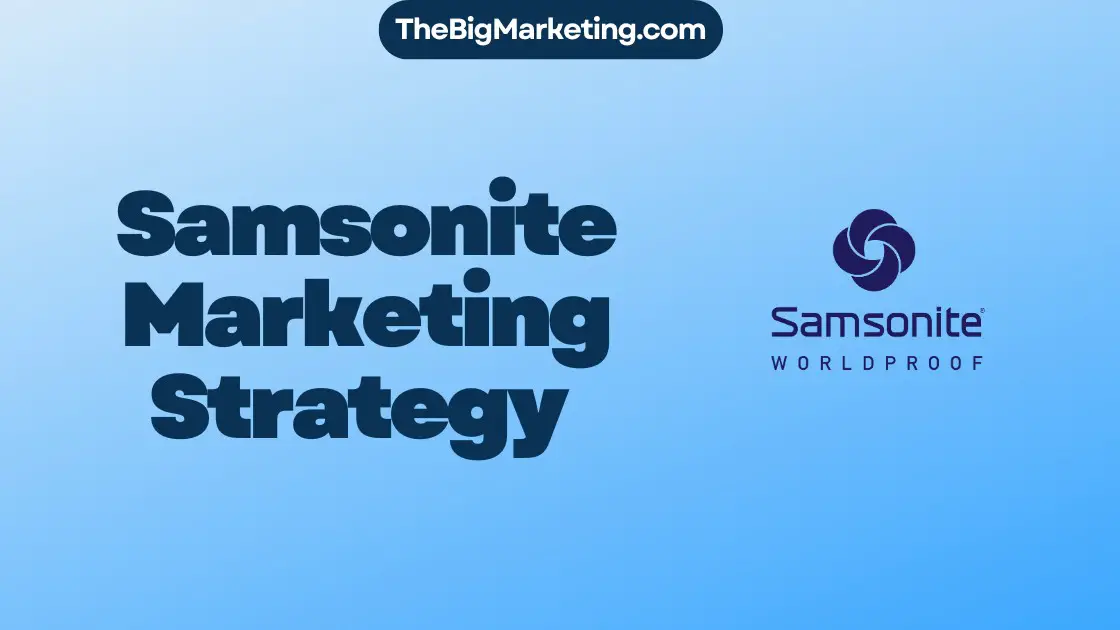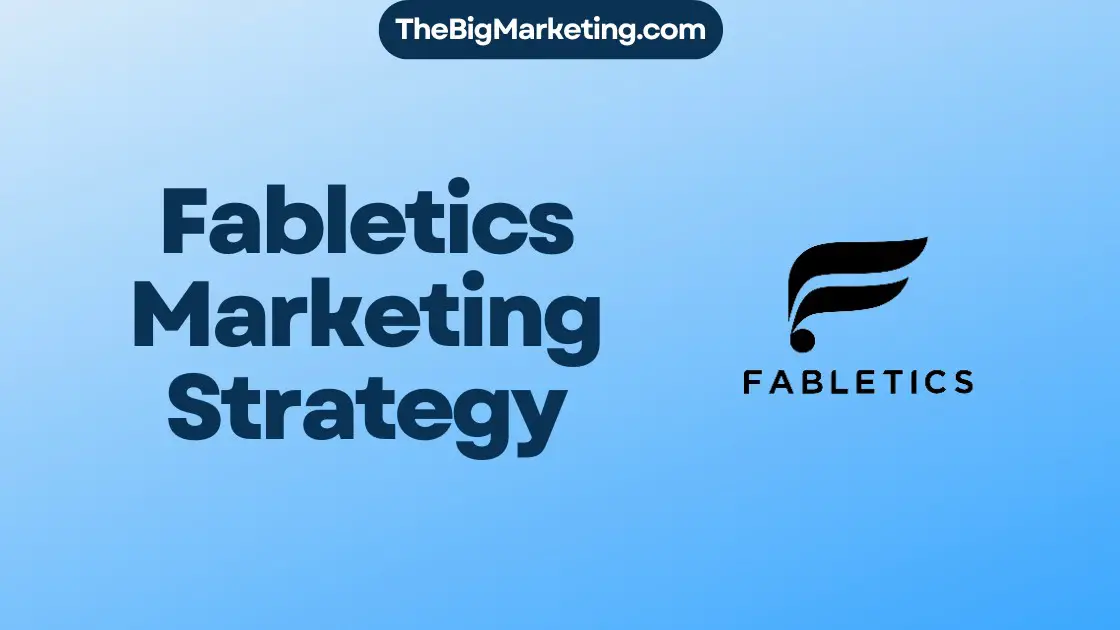The Internet of Things (IoT) has become an integral part of our everyday lives, revolutionizing industries and transforming the way we interact with technology. As IoT continues to grow and expand, so do the marketing strategies required to effectively promote and sell IoT products.
This comprehensive guide will delve into the key aspects of IoT marketing in 2024, providing insights and techniques to help businesses navigate the ever-evolving landscape. From understanding the unique value proposition of IoT products to leveraging data-driven marketing and embracing collaborations, this guide covers it all.
Key Takeaways:
- Understanding the value proposition of your IoT product is crucial for effective marketing.
- Prioritizing user experience (UX) ensures positive interactions and engages customers.
- Security and privacy concerns must be addressed transparently to build trust with customers.
- Data-driven marketing allows for personalized strategies and higher engagement rates.
- Storytelling can showcase real-world applications and emotionally connect with your audience.
Understanding the IoT Value Proposition
For successful marketing of IoT products, it is essential to deeply understand and clearly articulate their unique value proposition. This involves identifying the problems they solve and how they enhance lifestyles or improve business operations. When marketing IoT products, it’s important to remember that you’re not just selling a product, but offering a solution or an enhancement to a lifestyle.
| Key Points for Understanding the IoT Value Proposition |
|---|
| Identify the problems that your IoT product solves. |
| Highlight how your product enhances lifestyles or improves business operations. |
| Consider the unique features and capabilities of your IoT product. |
| Articulate the value that your product offers to customers. |
| Showcase the tangible benefits and outcomes of using your IoT solution. |
Focusing on User Experience (UX)
The success of an IoT product heavily relies on its user experience (UX). When designing and marketing IoT products, it is crucial to prioritize user satisfaction and convenience. By enhancing user interaction and creating positive user experiences, you can maximize the appeal and adoption of your IoT solutions.
One key aspect of improving user experience is ensuring ease of setup. IoT devices should be easy to install and connect, allowing users to quickly start enjoying their benefits. Intuitive interfaces are also essential for providing a seamless user experience. Design interfaces that are user-friendly and intuitive, allowing users to effortlessly navigate and interact with your IoT product.
To showcase the simplicity and convenience of your product, consider incorporating testimonials or case studies from satisfied users. These testimonials can highlight the positive experiences and outcomes that customers have had with your IoT solution. Providing real-world examples of how your product has enhanced the lives of others can greatly enhance its appeal and credibility.
To further enhance the user experience, consider leveraging intuitive interfaces. By designing intuitive interfaces, users can easily navigate through your product’s features and functionalities. Intuitive interfaces reduce the learning curve for users and create a more enjoyable and rewarding experience.
In addition to intuitive interfaces, focus on optimizing the convenience of your IoT product. Simplify complex processes and provide clear instructions on how to use your product. Integrate automation and smart features to streamline tasks for users, making their lives easier and more efficient.
Remember, the goal is to provide a seamless and enjoyable user experience that adds value to the lives of your customers. By prioritizing user experience and creating intuitive interfaces, you can differentiate your IoT product in the market and drive higher adoption rates.
Prioritizing Security and Privacy
In an era of increasing concerns about data security and privacy, addressing these issues in IoT marketing is essential. It is vital to prioritize the security and privacy of user data to build trust and confidence among potential customers.
To protect user data, transparently communicate the measures you have implemented to ensure IoT security. Emphasize the robust security features of your product to alleviate any privacy concerns. By emphasizing security features, you can showcase your commitment to protecting user data and differentiate yourself from competitors.
When marketing an IoT product, highlighting security and privacy as primary selling points can be a powerful strategy. Assuring customers that their data is safe and secure builds trust and enhances brand reputation.
Importance of Securing User Data in IoT
As the Internet of Things continues to grow, the amount of data generated and shared by devices increases exponentially. This data often contains sensitive information, making security a top priority for users.
Privacy concerns have become a significant barrier to the widespread adoption of IoT devices. Users are worried about their personal information being compromised or misused. By prioritizing security and privacy, you can address these concerns and position your product as a reliable and trustworthy choice.
Furthermore, complying with privacy regulations and industry standards is crucial for IoT marketing success. By adhering to strict security protocols and demonstrating your commitment to protecting user data, you can enhance customer confidence and maintain compliance with applicable regulations.
| Benefits of Prioritizing Security and Privacy in IoT Marketing |
|---|
| 1. Enhanced Trust and Confidence |
| 2. Competitive Advantage |
| 3. Regulatory Compliance |
| 4. Reduced Risk of Data Breaches |
| 5. Improved Brand Reputation |
Leveraging Data-Driven Marketing
One of the key advantages of IoT products is their ability to generate vast amounts of data. This data can be used to gain valuable insights into customer behavior and preferences, enabling businesses to create more effective marketing strategies. By harnessing the power of IoT data-driven marketing, companies can personalize their marketing campaigns, leading to higher engagement rates and increased conversion rates.
Personalized marketing is a strategy that tailors marketing messages and experiences to individual users based on their behavior and preferences. By analyzing user data, such as purchase history or interaction patterns, businesses can deliver targeted and relevant content to each customer, making them more likely to engage and convert.
User behavior analysis is a crucial component of data-driven marketing. By examining how users interact with IoT products, businesses can gain insights into their preferences, pain points, and motivations. This information can be used to develop customer personas, understand the customer journey, and optimize marketing efforts at each touchpoint.
Benefits of Data-Driven Marketing:
- Higher engagement rates: By delivering personalized and relevant content, businesses can capture users’ attention and encourage them to interact with their products or services.
- Improved customer satisfaction: By understanding user preferences and pain points, businesses can tailor their offerings to better meet customer needs, resulting in higher satisfaction levels.
- Increased conversion rates: Personalized marketing messages and experiences resonate with users, making them more likely to convert into paying customers.
- Better decision-making: Data-driven marketing provides businesses with valuable insights that can inform strategic decision-making, product development, and marketing campaign optimization.
To illustrate the impact of data-driven marketing in the IoT landscape, consider the following example:
| Traditional Marketing | Data-Driven Marketing |
|---|---|
| Mass marketing campaigns that target broad audiences without personalization. | Targeted campaigns that deliver personalized messages based on user preferences, increasing the likelihood of engagement. |
| Low engagement rates and conversion rates. | Higher engagement rates and increased conversion rates due to personalized content. |
| Inefficient use of marketing resources by targeting irrelevant audiences. | Efficient allocation of marketing resources by targeting specific audiences with higher potential for conversion. |
In conclusion, leveraging data-driven marketing strategies is essential for businesses looking to maximize the potential of their IoT products. By analyzing user behavior, personalizing marketing campaigns, and delivering relevant content, companies can increase engagement rates, improve customer satisfaction, and drive higher conversion rates.
Utilizing Storytelling to Showcase Real-World Applications
In the realm of IoT marketing, storytelling plays a powerful role in resonating with consumers. Rather than inundating potential customers with technical specifications, weaving a narrative around your IoT product can effectively illustrate its real-world applications and customer-centric benefits. By crafting stories that vividly portray how your product seamlessly integrates into and enhances daily life or business operations, you can captivate your audience and drive meaningful engagement.
One compelling way to showcase the value of your IoT product is by presenting real-world examples. These examples provide tangible evidence of how your product has positively impacted the lives of individuals or transformed business processes. For instance, imagine illustrating how your IoT home security system thwarted a burglary attempt, providing peace of mind for homeowners. Sharing these anecdotes can instantly connect with your audience on an emotional level, fostering trust and credibility.
Customer-centric marketing is at the core of successful IoT storytelling. By placing your customers at the forefront of your narrative, you convey the message that your product is designed to address their pain points and enhance their experiences. Highlighting the benefits and convenience your product brings, such as energy savings or streamlined operations, reinforces the notion that your IoT solution is tailored to meet their unique needs.
An essential tool in storytelling is the ability to illustrate product benefits. By showcasing how your IoT product solves a specific problem or makes life easier, you create a compelling case for its adoption. For example, you can narrate how a smart thermostat optimizes energy usage, resulting in lower utility bills and a greener footprint. These benefits, when artfully communicated, serve as persuasive motivators for potential customers.
To enhance the impact of your storytelling, consider incorporating diverse content formats such as written case studies, videos, or testimonials. This allows you to engage your audience through multiple channels and cater to different preferences. Visual elements, like images or infographics, can further enhance the storytelling experience by visually representing the transformative power of your IoT product.
Real-World Applications of IoT Products
Real-world examples can be highly effective in showcasing the practical applications of IoT products. Here are a few notable examples:
| IoT Product | Real-World Application |
|---|---|
| Smart Home Automation | Controlling lighting, thermostats, and appliances remotely for convenience and energy efficiency. |
| Fleet Management System | Tracking and optimizing routes, reducing fuel consumption, and improving delivery efficiency. |
| Wearable Fitness Tracker | Monitoring health metrics, providing personalized insights, and motivating individuals to achieve their fitness goals. |
These examples illustrate how different IoT products cater to diverse needs and industries, underscoring the versatility and potential impact of IoT solutions.
By leveraging storytelling techniques and real-world examples in your IoT marketing strategy, you can effectively engage your audience, foster connections, and highlight the value and benefits of your product. Remember, compelling and customer-centric narratives have the power to captivate and convert potential customers in the ever-expanding world of IoT.
Investing in SEO and Content Marketing
A robust online presence is essential for IoT products. To ensure increased visibility and reach your target audience effectively, it is crucial to invest in search engine optimization (SEO) strategies. By optimizing your website and content for search engines, you can improve your organic rankings, drive more traffic, and attract potential customers.
Content marketing is another powerful tool for engaging potential customers and establishing your brand as a thought leader in the IoT industry. Through informative and valuable content, such as blog posts, how-to guides, and industry insights, you can build trust, authority, and credibility. With content marketing, you can showcase your expertise and provide solutions to the challenges your audience faces.
Explainer videos are an engaging and effective way to educate your target audience about your IoT products. These videos can simplify complex concepts, demonstrate product features and benefits, and create an emotional connection with viewers. By incorporating explainer videos into your content marketing strategy, you can effectively communicate your value proposition and capture the attention of potential customers.
Engaging potential customers through blogs, how-to guides, and explainer videos is just the beginning. It is essential to consistently create high-quality content to maintain your audience’s interest and keep them coming back for more. By regularly updating your website with informative and relevant content, you can establish your brand as a trusted source of information and increase customer engagement.
By combining SEO strategies with compelling content marketing, you can effectively target and engage potential customers in the IoT industry. Remember to analyze your marketing efforts regularly to identify areas of improvement, adapt to changing trends, and stay ahead of your competitors.
Now, let’s take a look at how IoT collaborations and partnerships can enhance your marketing efforts in the next section.
| Benefits of Investing in SEO and Content Marketing | Effective Strategies |
|---|---|
| Increased visibility and organic rankings | Optimizing website structure and meta tags |
| Driving targeted traffic to your website | Keyword research and optimization |
| Establishing authority and credibility | Creating informative and valuable content |
| Engaging potential customers | Utilizing blogs, how-to guides, and explainer videos |
| Increasing customer loyalty and retention | Consistently providing high-quality content |
Embracing Collaborations and Partnerships
In the vast and interconnected IoT ecosystem, collaborations and partnerships play a crucial role in expanding marketing avenues and enhancing product capabilities. By joining forces with other companies and platforms, you can leverage complementary strengths and reach wider audiences.
Collaborations in IoT offer the opportunity to tap into new markets, share resources, and combine expertise to create innovative solutions. Through strategic partnerships, you can enhance your product capabilities, improve customer experiences, and build credibility in the industry.
When exploring potential collaborations in IoT, look for synergies with brands and platforms that align with your product’s values and goals. Seek out partners who share a common vision and can contribute to your overall marketing strategy.
Collaborations and partnerships provide a platform for joint marketing efforts, enabling you to reach a broader audience and benefit from shared resources. By partnering with companies that have established customer bases, you can gain exposure to new markets and drive brand awareness.
Moreover, alliances with industry leaders can enhance your product’s capabilities through technological integrations and access to new features. By combining forces, you can create powerful solutions that address complex challenges and provide added value to customers.
Examples of IoT Collaborations and Partnerships:
To illustrate the impact of collaborations and partnerships in the IoT industry, let’s explore a few notable examples:
| Company | Partnership Details |
|---|---|
| Collaboration with smart home device manufacturers to integrate Google Assistant, expanding the reach of voice-controlled IoT devices. | |
| IBM | Partnerships with companies in various sectors, such as healthcare and agriculture, to develop IoT solutions that optimize resource management and improve operational efficiency. |
| Amazon | Integration of Amazon Web Services (AWS) with IoT platforms to provide scalable cloud solutions and enable seamless data analysis for IoT applications. |
These collaborations showcase the power of partnerships in driving innovation and delivering value to customers. By embracing collaborations and partnerships, you can position your IoT product for success in a rapidly evolving market.
The Role of IoT in 2024
In 2024, the Internet of Things (IoT) will play an increasingly significant role in shaping marketing strategies. As technology advances, marketers must stay informed about IoT market trends and anticipate the future of IoT marketing. By staying ahead of these advancements, businesses can position themselves as industry leaders and gain a competitive edge.
The future of IoT marketing holds immense potential for businesses, enabling them to reach broader audiences and create personalized customer experiences. As IoT devices become more integrated into daily life, marketers have the opportunity to leverage these advancements to enhance their marketing efforts.
One of the key IoT market trends is the proliferation of interconnected devices. This interconnectedness opens up new possibilities for data collection and analysis, allowing marketers to gather valuable insights into customer behavior and preferences. By utilizing these insights, businesses can deliver more targeted and relevant marketing campaigns that resonate with their audience.
IoT advancements also present opportunities for businesses to leverage emerging technologies such as artificial intelligence (AI) and machine learning (ML). These technologies can automate and optimize various marketing processes, enabling businesses to create more efficient and effective campaigns. By incorporating AI and ML into their IoT marketing strategies, businesses can streamline operations and improve overall ROI.
Additionally, IoT advancements can enable businesses to deliver seamless and personalized customer experiences. Through IoT devices, marketers can collect real-time data to create tailored marketing messages that align with individual consumer preferences. This level of personalization enhances customer engagement and fosters stronger brand loyalty.
As businesses look to the future of IoT marketing, it is important to embrace these advancements and adapt strategies accordingly. By staying informed about IoT market trends and investing in innovative technologies, businesses can unlock new opportunities and drive growth in an increasingly connected world.
| Trend | Description |
|---|---|
| Increased Interconnectivity | The IoT ecosystem will continue to expand, resulting in a greater number of interconnected devices and systems. |
| Rise of Edge Computing | Edge computing will become more prominent, enabling faster data processing and reduced reliance on cloud-based systems. |
| Enhanced Data Analytics | Data analytics capabilities will improve, allowing businesses to gain deeper insights and make informed decisions. |
| AI and ML Integration | Artificial intelligence and machine learning technologies will be seamlessly integrated into IoT devices for enhanced functionality. |
| Expansion of Smart Cities | Smart city initiatives will accelerate, leading to the deployment of IoT devices across urban areas for improved efficiency and sustainability. |
Implementing IoT Market Analysis
To effectively market IoT products, it’s crucial to conduct thorough market analysis. This involves understanding the current landscape, identifying competitors, and analyzing market trends. By gaining insights into the IoT market, you can shape your marketing strategies and position your product successfully.
Market research for IoT enables you to understand the demand, competition, and potential opportunities in the industry. By studying the preferences and needs of your target audience, you can align your product features and messaging accordingly. Competitive analysis helps you identify the strengths and weaknesses of your competitors, enabling you to develop a unique value proposition that sets your product apart.
Analyze the market trends in the IoT industry to uncover opportunities for growth and innovation. Stay updated on emerging technologies, customer preferences, and changes in consumer behavior. By adapting your marketing strategies to these trends, you can stay ahead of the competition and cater to evolving customer demands.
Remember, IoT market analysis is an ongoing process. Regularly monitor market dynamics, consumer feedback, and industry developments to refine your marketing approach. By continuously evaluating the market landscape, you can identify new opportunities and optimize your strategies to maximize the impact of your IoT product.
Benefits of IoT Market Analysis
Implementing IoT market analysis offers several advantages for your marketing efforts:
- Identify target audience: Understand your target audience’s needs, preferences, and pain points to create targeted marketing campaigns and product positioning.
- Competitor analysis: Gain insights into your competitors, their strategies, and market share to differentiate your product and capitalize on unique selling points.
- Optimize pricing: Analyze the market demand and pricing dynamics to set the right price for your IoT product, maximizing competitiveness and profitability.
- Market entry strategy: Determine the most effective market entry strategy, whether it’s targeting a specific industry, niche market, or geographic region.
- Informed decision-making: By basing your marketing decisions on data-driven insights, you can mitigate risks and make informed choices to achieve better results.
Implementing IoT market analysis empowers you to make well-informed decisions, minimize risks, and maximize the impact of your marketing efforts. It enables you to understand the IoT market landscape, identify opportunities, and develop effective strategies to position your product as a leader in the industry.
Conclusion
In conclusion, the success of marketing IoT products in 2024 hinges on a combination of technical expertise, customer-centric approaches, and innovative strategies. By implementing the tips discussed in this guide, you can create a marketing campaign that resonates with your target audience and effectively positions your IoT product in an increasingly connected world.
It is important to recognize that promoting an IoT product goes beyond advertising a mere physical object. Instead, you are offering a connected lifestyle and smarter business solutions. This requires conveying the value of your product in addressing specific pain points and enhancing the lives of users.
As the IoT landscape continues to evolve, it is crucial to stay updated on market trends and technological advancements. This will allow you to adapt your marketing strategies accordingly and outshine your competitors. So, embrace the potential of IoT marketing, prioritize user experience and security, leverage data-driven insights, tell compelling stories, invest in SEO and content marketing, and explore collaborations to create a holistic and effective IoT marketing strategy in 2024 and beyond.







